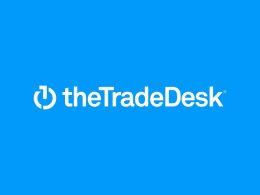by Brian Levitt, Invesco Canada
Among the most meaningful tips I received in my young career is that of all the indicators that signal what the economy may do next, the bond market gets it right most often. Thus, when the U.S. Treasury yield curve meaningfully flattens, I pay attention. Every recession over the past 60 years has been preceded by an inversion of the yield curve.1
What’s the yield curve telling us now?
As I write this, the spread between the 10-year U.S. Treasury rate and the 2-year U.S. Treasury rate is only 22 basis points, and the forward curve suggests that the 2s/10s spread may be inverted within a matter of weeks.2 Is it time to call the imminent end to the current business cycle and to meaningfully reduce our equity exposure? Not so fast. An inversion of the yield curve is a warning signal of future economic woes. Over the past six decades, the median amount of time between the initial inversion of the yield curve and the onset of a recession is 18 months.3 While a good indicator of future economic woes, an inverted yield curve has not been a very good timing tool for equity investors. For example, investors who sold when the yield curve first inverted on Dec. 14, 1988, missed a subsequent 34% gain in the S&P 500 Index.4 Those who sold when it happened again on May 26, 1998, missed out on 39% additional upside to the market.5 In fact, the median return of the S&P 500 Index from the date in each cycle when the yield curve inverts to the market peak is 19%.6
Historically, stocks have continued to rise even after the yield curve inverts

Where do we go from here?
The current shape of the yield curve is a signal of what we already believe — inflation is too hot, and growth is going to moderate, albeit from a very robust pace. In my view, recession talk is premature, with household net worth up 17% over the past year,7 retail sales up 18%,8 and industrial production up 8%.9 Nonetheless, we recognize that the cycle is unlikely to last for as long as once hoped. Other great advice received in my youth is to not fight the Fed. Inflation hastens monetary policy tightening which hastens the end of cycles, plain and simple. That said, the Fed is behind the curve and will likely not drive the federal funds rate above long rates until the beginning of 2023 at the earliest.
So, there’s likely time, although the risks are rising. Equity investors should be mindful to not overreact when the yield curve first inverts. It’s a red flag, but not a great near-term timing tool. As someone once advised me, it’s not the first rate hike of the cycle that typically matters for equities, it’s usually the last one.
1 Source: National Bureau of Economic Research, Bloomberg, L.P. The yield curve is represented by the spread between the 2-year and 10-year U.S. Treasury rates.
2 Source: Bloomberg, L.P., 3/22/22
3 Source: National Bureau of Economic Research; Bloomberg, L.P.; Invesco
4 Source: Bloomberg. L.P. Performance is from the initial inversion of the yield curve on Dec. 14, 1988, to the cyclical market peak on July 16, 1990. Past performance does not guarantee future results.
5 Source: Bloomberg, L.P. Performance is from the initial inversion of the yield curve on May 26, 1998, to the cyclical market peak on March 24, 2000. Past performance does not guarantee future results.
6 Source: Bloomberg, L.P. Past performance does not guarantee future results.
7 Source: Federal Reserve, 12/31/21. Latest data available.
8 Source: U.S. Census Bureau, 2/28/22
9 Source: Federal Reserve, 2/28/22
This post was first published at the official blog of Invesco Canada.













